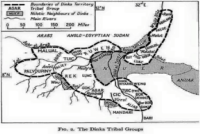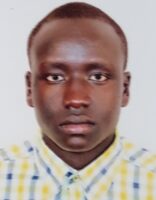Shamal Sudan and its Gold
The Golden Triangle is a region bound between Sudan and the world’s youngest nation South Sudan. It was and still is termed as ‘Shamal’ Sudan, which many colonial British administrators considered a region. The origins of the name are from inland African sub-tribes who would term that connotes the ‘sons’ of the north—owing to their territories being in the far northern end of ‘African’ or Black Sudan and their interaction and marriage to Arab tribes. Many of the subtribes are administered by Muslim Chiefs or Princes, thus leading to many British administrators adopting the name ‘Shamal’ for the cosmopolitan region.
The regions termed Shamal and Alaniel were defined even before the dawn of the British and Anglo-Turkish imperialist administrations. The area encompasses the Upper Nile region, Warrap, Unity, Northern Baharghazel, Ruweng, and Abyei States of current South Sudan. It also encompasses South Kurdufan, Blue Nile, and Darfur states of current Sudan. The region prides itself with a diverse group of people of Cushitic, Arab, and Nilotic origin. For centuries they have interacted and coexisted with limited cases of communal violence. My childhood visits stand testament to this. (Media, 1950)

Like many regions of the world, Shamal Sudan was disturbed by the declaration of independence of the Republic of Sudan in 1956. Multicultural Sudan initially was full of optimism as it was not the first country to have disposed of the colonial master. The great Mahdi had deposed the Anglo-Turkish administration in the purges of the Mahdi in the late 19th and early 20th centuries. The Mahdist upsurge was not bound to Khartoum but incorporated greater colonial Sudan. Chiefs like Biong Arop of Ngok Abyei, Chief of Ruweng Ngok, and Chief of Jur Dinka Mathiang, all visited the Mahdi. The visit is a sign of revolutionary solidarity, and the fun fact is that Chief Biong is my great-grandad.
Unlike the conflict experienced in newly independent India centered around ethnic and religious lines, the conflict in Sudan was centered around Junta regime interests and later treated as a racial and religious war by a desperate ‘Nimeri’ Junta (Patey, 2014). The military Juntas led to a rebellion in many parts of the country as economic and social conditions deteriorated. The most famous being the Anyanya movement in South Sudan to counter the regime of Sadiq Al Mahdi and Junta of Nimeri. It later evolved into the popular Sudan People’s Liberation Movement in 1983, led by John Garang.
Shamal Sudan, the wealthiest region of Sudan, would bear the heaviest brunt of the two wars as capitalist cowboys took sides and led to a rift in the region. The African sons of the region feeling Islamic subjugation fled to the north and many to the rebellions in the South. The perceived Islamic subjugation was actually a state-funded push to acquire mineral-rich land which belonged to the African indigenous tribes. Therefore, a societal rift was created, and a traditional human cross-border migration of two centuries was disrupted or ‘altered’ to a war of displacement and revenge. The war forced my family to relocate from our traditional ancestral land of Abyei to Cuba, then Kenya.
Victims, Villains, and Heroes
The Misserya is an Arab tribe who migrate between three countries; Sudan, Chad, and South Sudan, searching for pasture and water for their herds. Of all the Arab sections, the Misserya has coexisted and intermarried with the people of African descent. Chief Babo Nimir of Misserya was the first chief to sign a pact with the Chiefs of Ngok Abyei, Ruweng, Jur Mathiang, and the sons of greater Malwal. His people were allowed to migrate in and out of Dinka land without any quarrel. It has been so for all the Misserya Chiefs for centuries until the discovery of crude oil and gas in Dinka and Nuer land (Mading, The man called Deng Majok, 1986).
In a desperate counterinsurgency, the charismatic Junta leader Nimeri turned to Islam with a rallying call of the ‘Muhajadeen,’ referring to the Arab tribal fighters who were primarily Muslim despite their deep African beliefs. The consequence was the war turning into an ethnic, racial, and religious counterinsurgency war with an intensity in the Shamal region. State-funded militias became familiar with the ‘murhaleen’ fighters recruited heavily from the Misserya tribe of Shamal Sudan. Their umbrella movement is the Popular Defense Forces acting as a paramilitary and oil police. The villain can therefore be termed as the northern militia group.
Shamal Sudan saw a violence level that got to the proportions of scorched earth policy that led to one of the worst global famines in 1980-90 Sudan. The increasing levels of violence all over South Sudan, the mass recruitment of the Misserya into the Sudanese national army and paramilitaries complemented by the South Sudanese People’s Liberation Army, led to a border war. The rebellion, mainly between the Dinka and the paramilitaries of Misserya, led to a halt in a centuries-long migration along the borders of the modern Sudanese states. Eisenhower, a personal icon, was termed the villain as a senseless killer driven by the urge for resources.
The ceasefire declared in 2005 between the Sudanese military and Sudan People’s Liberation Army eased tensions for three years. Development was initiated in the area, and migration was common as a treaty was in place between the Dinka and Misserya Chiefs. Come 2011, a war over resources was experienced, leading to the destruction of Abyei and Pariang Dinka towns. A united mission force was deployed as per the request of Kofi Anan and a global security team (UNISFA, 2013). The force was initially comprised of five thousand diverse police and military peacekeepers with the name United Nations Interim Security Force in Abyei. It is vital to note that the force is greatly understaffed to this day.
Promising Future
United Nations Interim Security Forces in Abyei developed a mechanism of mediation between the two communities to encourage coexistence and inter-border migration. The job has not been limited to the UN mission but extended to other local and international organizations, notably the International Organization for Migration and community organizations. The two governments still locked in a state of dispute are constantly negotiating over the contested areas and the annual border conflict. Despite the optimism, the recent assassination of a prominent Padang Chief Kuol Adol has heightened tensions.
The existence and institutionalization of the People’s Defense Forces and its deployment within the demarcated ‘Abyei’ box and the border regions heighten tensions and conflict. South Sudan is newly independent and recovering from a civil war which is believed to be significantly funded by Sudan. The Khartoum regime was accused of funding ethnic militias in areas such as Unity and Warrap state. Therefore, I would like to conclude with a recommendation of increased involvement of the United Nations, the International Organization for Migration, and the two states for enabling sustainable peace in the region.
The resources in the border region that is the ‘Golden Triangle’ should realize a rise in inter-border trade experienced in the 70s and 80s in the border region. Investments should focus on developing cities that will serve both countries with a good infrastructure network. A promising ongoing infrastructure project is the Aweil Standard Railway Gauge, an inter-state investment. The railway is meant to boost inter-border migration, leading to a rise in trade and tourism activities. National and international implementing and monitoring partners should be up to the task of not merely preventing a conflict but rather ensuring development (Eyeradio, 2022).
References
Arop, A. M. (2006). Sudan’s Painful Road To Peace . Juba
Biong, L. (2000). The Rezigat militia in Wau. Journal of Startegic Studies
Deng, F. (1986). The man called Deng Majok. Khartoum: The red Sea Press
Deng, F. (2020). Abyei between the two Sudans. Juba: Red Sea Press
Deng, F. M. (1989). Cry of the Owl. New York
Eyeradio. (2022). Aweil’s residents welcome plan to reveive railway linking S.Sudan,Sudan. Juba
Mading, F. D. (1984). Dinka of the Sudan. Khartoum: Waveland Incorporated
Mading, F. D. (1986). The man called Deng Majok. Khartoum
Media, P. (1950). Padang Dinka territories . Juba
Patey, L. (2014). The new kings of crude China, India and the global struggle for oil in Sudan and South Sudan . Washington
Radio Tamjuz . (2013). ‘Matryered’ chief of Ngok remembered during death annivasary UNISFA. (2013). Retrieved from https://unisfa.unmissions.org/background

Benedict Kuol is a GRFDT Research Intern from the Abyei contested area in modern-day Sudan and South Sudan. He is also a scholar in the GRFDT Global Migration Compact in India. He is a finance graduate from Strathmore University with a passion for reading and writing.
